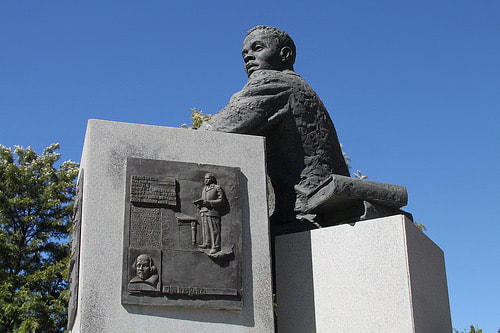Today in Kimberley's History
|
|
|
|
86 days since beginning of the Siege of Kimberley, 1900
Extract from "The Diary of a Doctor's Wife – During the Siege of Kimberley October 1899 to February 1900" by Winifred Heberden.
Mr Field, a Despatch Rider from here who was captured some weeks ago and sent to Bloemfontein, escaped, and arrived back this morning. He had had most exciting adventures and been practically 9 days without food. Jack says his complexion is marvellously pale and clear, almost like that of a person who is dead. Mr Field saw Inspector Blyth, who is quite contented, and is allowed to walk about a garden on parole in Bloemfontein.
There was sad news from Mafeking to-day, dated December 26th, where the defenders had made an unsuccessful sortie and lost 21 killed and 26 wounded; the Boer Fort and laager proving to be absolutely impregnable.
In the afternoon I had tea at the Artillery Mess while the band played. I was shown how they carry ammunition for the guns in the leather cases behind, and the use for the various parts contained in these cases.
Extract from "The Diary of a Doctor's Wife – During the Siege of Kimberley October 1899 to February 1900" by Winifred Heberden.
Mr Field, a Despatch Rider from here who was captured some weeks ago and sent to Bloemfontein, escaped, and arrived back this morning. He had had most exciting adventures and been practically 9 days without food. Jack says his complexion is marvellously pale and clear, almost like that of a person who is dead. Mr Field saw Inspector Blyth, who is quite contented, and is allowed to walk about a garden on parole in Bloemfontein.
There was sad news from Mafeking to-day, dated December 26th, where the defenders had made an unsuccessful sortie and lost 21 killed and 26 wounded; the Boer Fort and laager proving to be absolutely impregnable.
In the afternoon I had tea at the Artillery Mess while the band played. I was shown how they carry ammunition for the guns in the leather cases behind, and the use for the various parts contained in these cases.
ANC demands changes to facilitate democratic elections - 1993
The African National Congress (ANC) National Executive Committee (NEC) presents five demands to be met during the year in order to facilitate South Africa's first democratic elections. These are the resumption of multilateral talks in the form of the Convention for a Democratic South Africa (CODESA), ensuring a climate for free political activity in all parts of the country and the establishment of the Transitional Executive Council and its sub-structures. The ANC's NEC also calls for an independent electoral commission and an independent media commission to ensure free and fair elections, elections for a constituent assembly and an interim government of national unity before the end of the year. They also demand the reincorporation of all the homelands, including the Transkei, Bophuthatswana, Venda and Ciskei. At a later news conference, ANC president Nelson Mandela indicates that his organisation will not insist on elections in 1993 if their demands are not met.
The African National Congress (ANC) National Executive Committee (NEC) presents five demands to be met during the year in order to facilitate South Africa's first democratic elections. These are the resumption of multilateral talks in the form of the Convention for a Democratic South Africa (CODESA), ensuring a climate for free political activity in all parts of the country and the establishment of the Transitional Executive Council and its sub-structures. The ANC's NEC also calls for an independent electoral commission and an independent media commission to ensure free and fair elections, elections for a constituent assembly and an interim government of national unity before the end of the year. They also demand the reincorporation of all the homelands, including the Transkei, Bophuthatswana, Venda and Ciskei. At a later news conference, ANC president Nelson Mandela indicates that his organisation will not insist on elections in 1993 if their demands are not met.
|
Unveiling of the Bronze statue of Solomon Plaatje in 2010
The bronze statue was unveiled by President Jacob Zuma on the afternoon of 9th January 2010, following the 98th anniversary celebration of the founding of the ANC (January 8th Statement). The monument, sculpted by Johan Moolman, features the literary icon in a sitting position. Moolman's idea was to show Plaatje's peaceful, non-violent nature by sculpting his legs in a relaxed position. His philosophical, intellectual and literary mind is reflected in his alert upper body. Other reliefs around the monument were intended to encapsulate elements of Plaatje's life. A picture of Plaatje the newspaper editor reflects his journalistic side. To the left of that plaque is an image of William Shakespeare, which tells the story of Plaatje's noteworthy translations of the Bard's works. In the final plaque, Moolman uses powerful imagery to depict the 1913 Land Act. Michelangelo's Adam and Eve has been reinterpreted to show two people cowering from a policeman holding a baton. Underneath that, Halley's Comet symbolises imminent disaster. |

